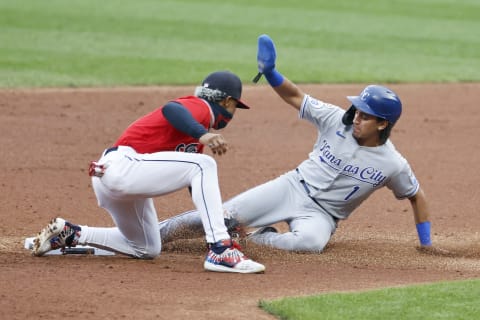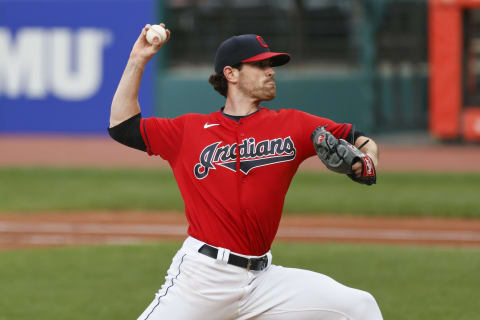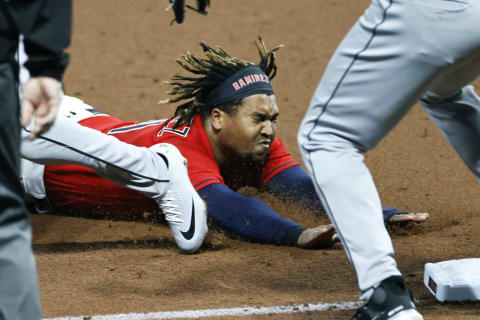Yankees: 3 bad Indians stats that prove NYY is being underestimated

Baseball fans are overlooking the Yankees because of their streakiness, but what about the Indians?
We’ll be the first ones to admit that the New York Yankees‘ 2020 season was underwhelming at best. Despite injuries (again), the Bombers finished 33-27 and captured the No. 5 seed in the AL playoffs, which, one could say, is not very good for this team’s standards.
However, people seem to be forgetting Gerrit Cole is this team’s ace and the lineup is arguably the deepest in baseball. Playoff Tanaka? Hello? A streaky regular season shouldn’t have everybody doubting them in the postseason, especially since their opponent in the Wild Card series, the Cleveland Indians, isn’t exactly the poster child for success.
Yankees fans already know the Bombers’ flaws, but some might not be entirely familiar with this Indians team across this year’s 60-game slate. Let’s take a look at some statistics that clearly show Cleveland’s weaknesses.

3. Almost half of the Indians’ games have come against…
How is the media overlooking the fact the Indians have faced a lot of inferior teams?
The season was 60 games. The Indians played 29 of those against the Pittsburgh Pirates, Kansas City Royals and Detroit Tigers. That’s not their fault — typically you get a healthy mix of opposition in a 162-game slate — but don’t you think this will play a role when the time comes to face the best lineups in the league?
We know, the Indians had to do battle with the Minnesota Twins, Chicago White Sox and Chicago Cubs, but they were just 11-13 in those games. They haven’t exactly been mowing down some of the most proficient offenses in the league.
Now, they’ll welcome the most dangerous lineup to Progressive Field for a three-game set to determine their fate of the 2020 season. Bieber is a strikeout machine, but he’ll have a tough time battling with Gleyber Torres in the No. 7 spot in the lineup — that’s how deep the Yankees’ offense is.
Plus, five of Bieber’s 12 starts came against that aforementioned competition.

2. Rotation has almost no postseason experience
Indians starters Shane Bieber and Zach Plesac have never made a playoff start.
Shane Bieber (0 career playoff games), Zach Plesac (0 games) and Carlos Carrasco (2 games) will be the starters for the three-game Wild Card set. These are all tremendous arms, but the stakes are higher in October. Having next to no exposure to that kind of play can prove detrimental, even with the circumstances being different in 2020.
Yes, the Indians were second in all of MLB with a 3.29 ERA, but we just discussed how half of that sample size came against teams that fail to score a lot of runs. Tigers ranked 23rd in the league in that department, with the Royals at 24, and the Pirates dead last.
As for the bullpen, closer Brad Hand has just two postseason games under his belt and was shelled, allowing two earned runs on three hits and a walk in 1.2 innings in 2018 against the Houston Astros. (We know that’s not the rotation, but it further bolsters our case.)
All their former postseason arms are gone. No more Corey Kluber, Trevor Bauer or Mike Clevinger. The faith has been placed in Bieber (we’ll see what he can do in his first career start). Carrasco has pitched in just 148 innings since the start of last year. And Plesac was at the forefront of the controversy in which he broke COVID-19 protocols and tried to hide it from the team.
We’re by no means saying this rotation is bad, but all of those factors could play a big role.

1. Cleveland’s offense isn’t very … good
Even the Yankees benefit from Cleveland’s lackluster offense.
And if we want to talk about Cleveland’s production at the plate, they’re tied for 24th with KC in runs scored! The Indians also rank 23rd in batting average (.228) and 27th in OPS (.689). That’s downright bad. They also hit just .240 with runners in scoring position compared to .255 for the Yankees.
Also, how about streakiness? That’s pretty much in Cleveland’s DNA. If we’re going to sour on the Yankees for their up-and-down campaign that largely was symptom of injuries, lack of a consistent lineup, and working players back up to speed, how can we ignore the Indians, who lost 11 of 16 from Aug. 30 to Sept. 16 during which they score 56 runs? In the interest of fairness, they admirably rebounded to sweep the White Sox in a four-game set last week to put themselves in this position.
But the Indians also have issues elsewhere. They’re batting just .214 with two outs and runners in scoring position. Francisco Lindor is hitting .244 against right-handed pitching and .167 with RISP. Jose Ramirez hits just .263 against right-handed pitching. Franmil Reyes has just two home runs and a .238 average with RISP. Those are their three best hitters!
Assuming Gerrit Cole can take care of business in Game 1, it’ll be tough for the Indians to battle back when they seemingly have staggered offensive production that hardly threatens top opposing pitchers.
